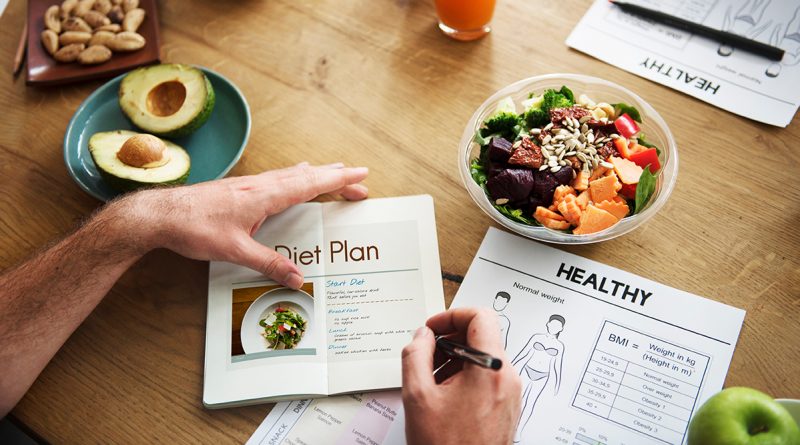6 Ways To Make Your Diet Healthier Step-By-Step
A fixed diet surely provides you with a lot of health benefits. However, suddenly changing your regular diet or making major changes can feel a little overwhelming. It might also not suit your health and can cause minor issues. Therefore, it’s better to start with small things at first.
Bring small & gradual changes to your diet
Even the best diet might benefit from a few changes to help you achieve your health objectives. It’s actually good for weight loss, muscle buildup, and gaining steady energy. Here are the six tips to help you keep things simple and get healthier day by day.
#1. Increase protein consumption
A high-protein diet will help you gain muscle mass, burn calories more efficiently. Also, it will keep you full for longer periods of time after each meal. Adding protein into your snacks and meals can help you go longer between meals. By allowing your body to burn off what you’ve eaten before your next meal, it helps your digestive system to function properly.
If you eat meat, choose leaner cuts that haven’t been grilled. Pescatarians can boost their omega 3 intakes by eating another plate of salmon over the week. Meanwhile, vegans should increase their intake of nuts and nut butter. Vegetarians who consume dairy and eggs should add an egg, especially in the morning, for long-term fullness.
#2. Include more greens in your meal
While you may not like the idea of eating only salad for breakfast, try other ways to consume them. Consider trying delicious healthy recipes that combine greens early in the food. Greens contain a high amount of nutrients and roughage and thus are really beneficial for your health.
Starting your day by eating greens helps control a blood sugar surge. Moreover, it slows down the rate of glucose absorption, preventing continuous sleepiness. You can make yourself a salad bowl by starting at the bottom and working your way up.
Otherwise, if you want to make a healthy-tasty & balanced breakfast for yourself, you can try the things mentioned below:
- Include a hard-boiled egg, chicken breast, or salmon in your breakfast for protein
- Sliced tomatoes for Vitamin C and fiber
- Use avocado for a healthy fat
- Start adding whole grains for energy and insoluble fiber
- Greens, for Vitamins, minerals, and fiber
Dress your salad with basic vinegar or lemon juice and oil to increase the joy of flavor!
#3. Drink a lot of water
If you find it difficult to drink enough water daily, consider adding water to your meals. Try using it as a tool to compensate for the amount your body requires. On the other hand, always carry a water bottle around too. Hydrating yourself constantly is always a great idea for staying healthy. Take one bite of food and then put your fork down. Take a sip of water to clear your throat, then pick up the fork again.
Also, if you eat while doing other activities, make sure your mouth is empty before picking up your fork again. It may be a bit difficult if you work while eating. This way, you may discover that you finish your meal before your plate is completely empty. This is all wonderful. Using water as a palate-cleanser and allowing your stomach to rest is a great method to maintain good health.
#4. Eat whole-grain foods, avoid refined
Whole grains are more satisfying and contain more fiber than refined grains. Even they can be really a blessing for your health. 2 to 3 servings of whole grains each day are beneficial to your heart health and cholesterol levels.
Whole grains contain
- steel-cut oats for breakfast
- On a cold night, brown rice with a bean soup for low fat with filling protein
- For a healthy lunch, quinoa, or millet on a big bed of greens with lean protein
If you’re not getting enough fiber in your diet right now, start with whole grains. Also, be prepared to drink more water. Increase your roughage intake by eating raw fruits and vegetables. Try to make your breakfast simple by including whole grain bread with peanut butter and apple slices. It will provide a wonderful balance of protein, insoluble fiber, and roughage.
#5. Pick the fruit instead of juice
If you enjoy smoothies, try to avoid using too much fruit juice in the recipe. Fruit juices can generate a glucose rise as well as an increase in insulin production. It can make you feel quite exhausted.
Consider a smoothie that starts with a liquid base of nut or oat milk. Then add greens, berries, and a banana or avocado for a smooth texture. Don’t forget the protein powder. Above all, let the fruit, not the juice, provide the sweetness of the drink.
#6. Start baking or roasting instead of frying
The manner you choose to prepare your food can have a big impact on its health quality. Meat and fish are commonly prepared by grilling, broiling, frying, and deep-frying. Try to opt for alternative ways that require minimum oil use.
Various potentially harmful chemicals are generated throughout these sorts of cooking processes. Thus, baking or roasting your food instead of frying or even using an air-fryer can help you effectively to improve your health.
The bottom line
It takes time to develop a good eating habit. As you eat, take it slowly and stop when you’re full. Consider your stomach as a tank of gas if you’re having trouble stopping yourself from overeating. At each meal, use water and time to ensure that you are not more than 3/4 full.




